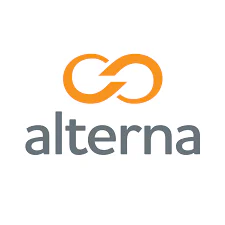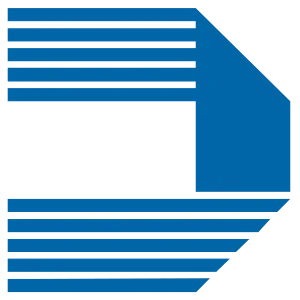Best 5 Year Fixed Mortgage Rates Ontario
Compare the best 5 year fixed mortgage rates Ontario from 20 top lenders, including Banks, Ontario Credit Unions, and Institutional Lenders.
In the article below, we review the advantages and disadvantages of the 5 year fixed mortgage rate, and the alternatives, to see if it’s right for you in 2026.
Private: Template 5 Year Fixed
As of October 16, 2025
As of October 16, 2025
5 yr Fixed
Insured mortgage rates are typically for less than 20% down payment and are insured against default through the CMHC or comparable default insurer. This involves a one time insurance premium built into the mortgage principal. Maximums: 25 YR amortization, $999,999 purchase price. No refinances.
Insurable mortgages follow similar criteria as insured mortgages, but because these are 20%+ down payment/equity, there is no default insurance premium or additional cost built into the mortgage. Available for purchase and renewal, but not refinance/ equity takeout.
Uninsured mortgages are available for purchases of $1,000,000+ and refinance/equity take out transactions. Additional flexibility of uninsured mortgages includes optional 30 year amortization and more flexible borrowing limits.
-
 Altrua scans its database of 100+ for the best rates, then negotiates these rates even lower!
Altrua scans its database of 100+ for the best rates, then negotiates these rates even lower!Altrua Financial Mortgage Rates
3.79%
20% pre paymentPayment: $18,94/mo
3.79%
20% pre payment,Payment: $18,94/mo
3.99%
10% pre payment on this mortgage typePayment: $18,94/mo
-

TD
4.24%
Payment: $18,94/mo
4.64%
Payment: $18,94/mo
4.64%
Payment: $18,94/mo
-

BMO
4.49%
Payment: $18,94/mo
-
Payment: -
4.95%
Payment: $18,94/mo
-

CIBC
4.19%
Payment: $18,94/mo
-
Payment: -
4.39%
Payment: $18,94/mo
-

RBC
4.59%
Payment: $18,94/mo
-
Payment: -
4.59%
Payment: $18,94/mo
-

Scotia
4.24%
Payment: $18,94/mo
-
Payment: -
4.49%
Payment: $18,94/mo
-

National Bank
3.94%
Payment: $18,94/mo
-
Payment: -
4.09%
Payment: $18,94/mo
-

Manulife
4.24%
Payment: $18,94/mo
4.44%
Payment: $18,94/mo
-
Payment: -
-

Desjardins
4.24%
Payment: $18,94/mo
4.39%
Payment: $18,94/mo
4.39%
Payment: $18,94/mo
-

Laurentian Bank
4.24%
Payment: $18,94/mo
4.54%
Payment: $18,94/mo
4.54%
Payment: $18,94/mo
-

First Ontario
4.39%
Payment: $18,94/mo
4.39%
Payment: $18,94/mo
4.39%
Payment: $18,94/mo
-

Alterna
3.99%
Payment: $18,94/mo
4.14%
Payment: $18,94/mo
4.39%
Payment: $18,94/mo
-

DUCA
4.39%
Payment: $18,94/mo
4.44%
Payment: $18,94/mo
5.59%
Payment: $18,94/mo
-

MCAP
4.29%
Payment: $18,94/mo
4.39%
Payment: $18,94/mo
4.54%
Payment: $18,94/mo
-

First National
4.29%
Payment: $18,94/mo
4.49%
Payment: $18,94/mo
4.49%
Payment: $18,94/mo
-

ICICI
6.14%
Payment: $18,94/mo
6.14%
Payment: $18,94/mo
614%
Payment: $18,94/mo
-

CMLS
4.29%
Payment: $18,94/mo
4.29%
Payment: $18,94/mo
4.49%
Payment: $18,94/mo
5-Year Fixed Mortgage Rates Are Best For…
- Those looking for mortgage rate stability and peace of mind for the next 5 years.
- Borrowers who are uncomfortable with interest rate swings, and want to protect against upside risk.
- Borrowers who prefer the interest savings that come with todays lower 5-year fixed mortgage rates.
- Those who plan to pay down their mortgage faster over 5 years, can take advantage a lower mortgage rate today, while the mortgage balance is higher. If variable rates are lower in 1-3 years, it wont matter as much if the mortgage balance is reduced.
Advantages and Disadvantages of 5-Year Fixed Rates in Ontario
In Ontario, the 5-year fixed-rate is currently the second most popular mortgage type after the 3 year fixed rate, representing approximately 50% of total mortgages in 2026. Here, we review the advantages and disadvantages of this rate, which should be considered alongside your financial situation and long-term plans.
Advantages
The 5-year fixed-rate mortgage provides several advantages, making it a good choice for many homeowners:
Payment Stability: The biggest advantage of a 5-year fixed rate is stability. By locking in an interest rate for five years, homeowners gain the assurance of knowing exactly what their mortgage payments will be. This predictability can prove invaluable from a peace of mind perspective, allowing for accurate budgeting and financial planning without worrying about fluctuating interest rates.
Market Competition: Given the historical popularity of the 5-year fixed rate, it’s a central point of attention for lenders vying for mortgage business. This heightened competition can lead to lower profit margins or ‘spreads’ at lenders, and more advantageous terms for borrowers, resulting in opportunities to negotiate better interest rates or other beneficial features.
Lower Rates: In January 2026, some 5-year fixed rates are currently lower than other mortgage terms. This allows borrowers to lock in these lower rates longer, protecting them against potential rate increases over the next several years.
Qualification Ease: Because of the stricter stress test rules for qualifying for a mortgage, a 5-year fixed-rate mortgage often makes it easier for homebuyers to meet the requirements, making the path to homeownership slightly less challenging.
Refinance Increase and Blend: A 5-year fixed-rate mortgage usually allows borrowers to increase their mortgage amount through a ‘refinance’ and blend the existing rate with the new amount. This flexibility provides a viable option for homeowners to leverage their home equity without breaking their current terms.
Portability: Another advantage of 5-year fixed-rate mortgages is their portability. If you decide to move during your mortgage term, you can often transfer your mortgage to a new property without incurring penalties, providing valuable flexibility.
Lower Penalties Near Term End: Breaking a mortgage often involves penalties, especially for fixed-rate terms. However, the penalties for breaking a 5-year fixed-rate mortgage usually decrease as you approach the end of the term.
Disadvantages
However, there are also certain disadvantages to 5-year fixed-rate mortgages that borrowers should weigh:
High Breakage Cost: If the market rates decrease significantly during the first three-quarters of the term, the cost to break the mortgage to switch to a lower rate can be prohibitively high. While locking in a rate for 5 years provides security, it can also mean missing out on potential savings if rates drop.
Higher Breakage Penalties: Following the above limitation, 5-year fixed-rate mortgages have higher penalties for breaking the term early than shorter-term or variable-rate mortgages. This can be a significant disadvantage if your circumstances change and you need to adjust your mortgage before the end of the term for reasons other than lowering your rate.
Limited Lender Options: Choosing a 5-year fixed-rate mortgage can restrict your options if you’re considering moving or seeking a refinance or equity takeout within the term. Some lenders may not offer the same rates or terms for these situations, potentially resulting in higher costs.
While the 5-year fixed-rate mortgage offers excellent advantages, including payment stability and competitive rates, it’s essential to consider the potential downsides, such as high breakage costs and penalties. It’s important to carefully examine your financial circumstances, long-term goals, and tolerance for risk before making a decision. Doing so lets you choose the mortgage product that best suits your unique objectives.
Factors Influencing 5-Year Fixed Mortgage Rates
Several factors influence the 5-year fixed mortgage rates. Some of the most significant elements include lender competition, the lender’s perception of the housing market and economic risk, the role of comparable financial market instruments, and the impact of down payment or equity.
Lender Competition
The mortgage lending landscape is a highly competitive arena. With numerous lenders vying for business, rates are often influenced by the level of competition. Lenders may reduce their more popular rates to attract borrowers, which can cause other lenders to adjust their rates in response.
Lender’s Perception of Housing Market and Economic Risk
Lenders closely monitor the housing market and the broader economy when setting their rates. If a lender perceives high risk due to economic uncertainty or instability in the housing market, they may increase their rates to offset potential losses. This is known in the mortgage industry as a higher ‘lender spread’. Conversely, lenders might offer lower rates in a stable and strong economy with a robust housing market.
Role of Comparable Financial Market Instruments
Comparable financial market instruments, particularly the 5-year Government of Canada Bond Yield, play a key role in influencing the 5-year fixed mortgage rates. Generally, an increase in the yield on these bonds prompts an uptick in mortgage rates, while a decrease often leads to lower mortgage rates.
Impact of Down Payment or Equity
The size of the down payment or the equity available can also significantly impact the interest rates offered by lenders. This reflects the borrower’s “skin in the game” – a larger down payment or equity stake reduces the lender’s risk. Here’s a basic breakdown:
· CMHC Insured/ High Ratio: Borrowers who pay a 2.8% to 4.5% CMHC premium (included in the mortgage) can access the lowest rates as the premium protects the lender from default.
· 20% Down Payment: This minimum down payment is required to avoid CMHC insurance. As it exposes the lender to more risk, rates may be slightly higher.
· 25%, 30%, and 35% Down Payments: As the down payment increases, the interest rates tend to get lower. Often, the lowest rates comparable to CMHC-insured rates are available to borrowers who can put down 35%.
At Altrua, we aim to provide the absolute lowest market rate given the application requirements. We work with clients to navigate these influencing factors and secure the best possible mortgage rates.
Tips for Securing the Best 5-Year Fixed Rate
Getting the best 5-year fixed rate requires attention to detail and proper financial preparation. Here are some essential tips to help secure the most favourable rate:
1. Importance of Market Research
An overview of the market rates available in the market is a crucial first step. By shopping around and comparing different lenders’ rates, you can understand what’s competitive. Don’t settle for the first offer you receive – there might be better options out there. For the few minutes involved with calling another source, the savings could be thousands of dollars.
2. Ensuring a Balance Between Rate and Fine Print
While a low rate is attractive, understanding flexibility in the fine print is essential. Some lenders may offer seemingly competitive rates, but their fine print conditions could lead to higher expenses later on. Take the time to understand the terms and conditions associated with the mortgage.
3. Importance of Maintaining Good Credit
A good credit score is integral to securing the best possible rate. Lenders consider borrowers with strong credit histories less risky, thus offering them more favourable rates. Ensure your credit is in good shape, with no missed payments in the past three months and no credit cards over the limit. Regularly check your credit report and promptly correct any errors you find.
4. Mortgage Documents
Having the necessary mortgage documents ready can speed up the approval process. These documents usually include:
- Employment letter
- Recent paystub
- Proof of down payment (if applicable)
- Government-issued IDs
Being organized and prepared increases your chances of promptly securing the best rate.
Securing the best 5-year fixed rate involves more than just scanning for the lowest number. It requires a thorough understanding of your financial standing, the mortgage market, and a mortgage contract’s commitment. These tips can guide you toward securing a rate that best suits your circumstances.
Alternatives to 5-Year Fixed Mortgages
While 5-year fixed-rate mortgages are a popular choice among Canadian homebuyers, alternative mortgage options are available. These alternatives can suit your individual financial circumstances and risk tolerance.
3-Year Fixed Rate Mortgage
A 3-year fixed-rate mortgage can be viable for borrowers seeking short-term stability without tying themselves into a longer commitment. This option provides payment security for a considerable period and, in a fluctuating interest rate environment, could allow borrowers to access lower rates sooner if rates fall.
4-Year Fixed Rate Mortgage
Similarly, a 4-year fixed rate mortgage offers the security of a fixed rate for nearly as long as a traditional 5-year term. This option provides slightly more flexibility than its 5-year counterpart, allowing borrowers to reassess their interest rate situation relatively sooner.
Variable Rate Mortgage
A variable-rate mortgage offers the potential for lower rates over time, especially as market interest rates fall. While these rates may could eventually increase, they are more likely to decrease over the next few years, given weaker economic conditions in Ontario. Historically, a dedicated variable rate strategy has proven to save borrowers more in the long term. Additionally, variable mortgages often have more predictable penalties, typically equivalent to three months’ interest.
10-Year Fixed Rate Mortgage
Although less common, a 10-year fixed-rate mortgage is an option for borrowers seeking long-term security. However, considering the current economic cycle, where rates are on the higher end of the historical range (adjusted for debt and housing prices), committing to such a long term at higher rates poses a significant risk.
Each alternative has advantages and drawbacks, much like a 5-year fixed-rate mortgage. The choice ultimately depends on your circumstances, risk tolerance, and future expectations of interest rate movements. Connect with us at Altrua to discuss your mortgage rate options today.

